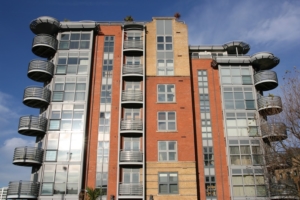 As you purchase your new condominium, you may enter a living situation that is unique for many homeowners. Condo owners own some of the property around them and they share other property. Defending your rights and meeting your responsibilities depends on understanding these aspects as well as how to resolve disputes.
As you purchase your new condominium, you may enter a living situation that is unique for many homeowners. Condo owners own some of the property around them and they share other property. Defending your rights and meeting your responsibilities depends on understanding these aspects as well as how to resolve disputes.
To help you maintain a good relationship with your condo association and avoid unnecessary costs, here’s a guide to how to learn those rights and responsibilities.
1. Read the Bylaws
The rules of the condo association are contained in the bylaws. These, along with the master deed of the property, make up the legal rules and regulations for everyone in the units.
Make sure you get a copy of these documents and read them carefully. You will find plenty of useful information, such as what elements are common and what your responsibility is, how to resolve conflicts, how expenses and purchases are made, and how members vote on items.
Look for updates to these bylaws as well as additional information in newsletters and other publications.
2. Know the Property Elements
You probably already know that the HOA designated some parts of your property as personal use while others are common. But, in fact, common areas may not all be completely common. The maps and bylaws should specify property elements that are completely available for use by all members, such as lawns, outdoor recreation areas, or the gym.
Other areas may be limited use elements that only certain tenants can use. This often includes shared patio spaces limited to buildings or floors, for instance. Exclusive use spaces are those that only one condo owner has access to.
Why do you need to know these specific designations? First, you avoid problems by not straying into limited or exclusive use areas. You can also assert your rights to those spaces when you fully understand those rights. These designations also affect how you should insure your condo as well as what you can expect to pay for maintenance and repairs.
3. Look at the Maps
The HOA should also have detailed maps of the condo property. These maps will accurately indicate such things as where your personal use property ends or begins, what elements are reserved for certain owners’ use, and where specific elements begin or end.
4. Learn the Dispute Process
Within the bylaws, you should find specific instructions on how to handle and resolve disputes. Early options for resolution often include having a one-on-one meeting with those involved in the dispute, meeting with the condo board as a whole, or writing a formal complaint letter that the board will address.
Mediation may be another good choice for avoiding undue animosity and expense – especially when trying to manage an issue between neighbors or between the condo board and certain tenants. Mediation is faster and less expensive than traditional litigation, and mediation helps find a more equitable resolution. Your attorney can help you decide if mediation is right for your situation.
5. Consult an Attorney
If you need to understand a larger issue or a legal matter about your condo ownership or rights, contact an experienced attorney as early as possible. Your attorney can clarify legal issues within the bylaws and maps as well as advise you on ways to prevent unnecessary escalation of the problem.
For help learning more about being part of a condo association and resolving specific challenges, contact
Randall A. Wolff & Associates, Ltd., today. We have helped Illinois homeowners with all their legal concerns for more than 25 years, and we can help you too. Call us today.





